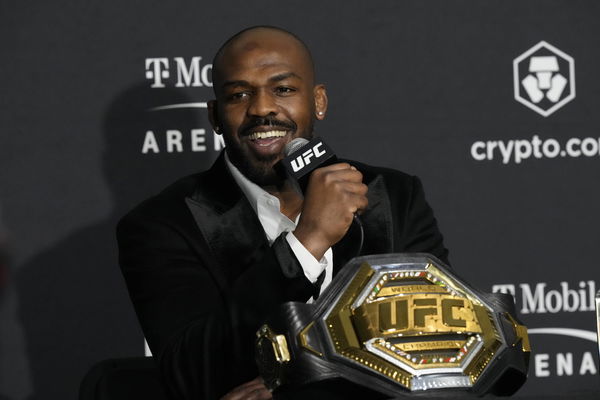
Imago
Credits: Imago

Imago
Credits: Imago
“Change is Constant” — a phrase often repeated but reluctantly accepted. Change can be daunting, yet for UFC head honcho Dana White, it has been a driving force behind the promotion’s meteoric rise since 2001. Under his leadership, the UFC has transformed into a global powerhouse, with innovations spanning from the introduction of weight classes to mandatory gloves and official rankings.
Watch What’s Trending Now!
Guided by his core belief that ‘fighting is in our DNA. We get it, and we like it,’ White has embraced evolution to keep the billion-dollar organization thriving. But as we step into 2025, with technology dominating every facet of life, what shifts will White need to make to ensure the UFC continues to lead the pack?
ADVERTISEMENT
A brand new glove design
Dana White’s mission to modernize UFC gloves took center stage at UFC 300. The promotion introduced four glove variations, including standout golden gloves for title bouts and sleek black gloves for standard fights. Launched in April 2024, these designs aimed to enhance fighter safety and reduce eye pokes. However, the initiative faced swift backlash and was scrapped before the year’s end.
By UFC 309, White made it clear: “The new gloves are now the old gloves,” signaling a return to the tried-and-true design. Fighters and pundits alike voiced their disapproval of the updated gloves, with Islam Makhachev criticizing them as “very stiff” following his bout at UFC 302. Even Jon Jones, who clashed with Stipe Miocic using the older gloves, admitted the new design posed challenges.
Top Stories
Ilia Topuria’s UFC Title at Risk After Personal Break Turns Worse With “Extortion” Claim

UFC Vegas 112 Fighter Carried Out of Octagon After KO Loss Leaves Her Unable to Walk

Daniel Cormier Takes Sly Dig at FOX While Reflecting on UFC’s ESPN Exit

Dana White Set to Lose Another Star to Boxing as UFC Champ Reveals Major Career Decision

Alistair Overeem Urges Rampage Jackson to Reconsider Major Career Move Amid Health Concerns

Jones’ discomfort with the revamped gloves was evident, but his spirits lifted upon learning from UFC matchmaker Hunter Campbell that he would be returning to the original design. UFC analysts such as Din Thomas and Daniel Cormier supported the move, noting the fighters’ preference for the classic gloves and the overall improvement in fight dynamics.
ADVERTISEMENT

Imago
Islam Makhachev | via Imago
The glove controversy of 2024 highlighted a critical challenge for the UFC: finding the perfect balance between fighter safety, comfort, and performance. Despite efforts to reduce cuts, abrasions, and eye pokes, the revamped gloves fell short of expectations. Fighters overwhelmingly expressed their preference for the original design, leading to a swift return to the old gloves.
ADVERTISEMENT
Looking ahead to 2025, Dana White and UFC officials face pivotal decisions. One possible approach could involve conducting a year-long poll where fighters cast votes after using both glove versions in training and competition. As we all rack our brains about gloves, let’s add another possible change related to d–g testing policies.
Expanding the D–g testing policies
The UFC has long maintained a zero-tolerance policy toward performance-enhancing dr–s, firmly enforcing these rules to ensure fair competition and athlete safety. Its partnership with the United States Anti-Doping Agency was a landmark step in this mission. Legends like Jon Jones and Nick Diaz were among those who faced suspensions and legal battles over violations involving banned substances.
ADVERTISEMENT
Despite Jones’ near-flawless MMA record, his career has been marred by controversies—both personal and professional. One notable incident occurred in 2016 when he tested positive for clomiphene and letrozole, leading to suspension. Under USADA’s sharp gaze, fighters, irrespective of their legendary performances, faced penalties if they broke any rules, whether intentionally or unknowingly.
However, in late 2023, UFC decided to part ways with USADA and partnered with Drug-Free Sports International (DFSI) for its 2024 anti-doping program. According to the UFC website, “All UFC athletes are subject to no-notice, 24/7/365 testing anywhere in the world. All contracted UFC athletes are enrolled in the program.”
ADVERTISEMENT

But here’s the kicker: the frequency of fighter testing noticeably decreased. One UFC fan pointed out how Jiri Prochazka had been tested 77 times in 2023 but was seemingly absent from the testing radar in 2024. Looking ahead to 2025, UFC could adopt enhanced technological protocols to strengthen its anti-dop–g measures.
ADVERTISEMENT
Real-time monitoring through wearable technology could provide continuous data on fighter health and performance, discouraging PED use while improving safety standards. As we focus on the evolution of gloves and d–g testing, another transformative change is already underway—paving the way for a groundbreaking year in the UFC.
The adoption of AI-powered rankings
For years, UFC rankings were determined by a panel of media personnel—a system that lasted nearly 11 years but often drew criticism for perceived biases and inconsistencies. In 2024, Dana White took a bold step toward modernization by integrating artificial intelligence (AI) into the ranking process, aiming for a more precise, objective evaluation of fighter placements.
ADVERTISEMENT
This decision came on the heels of heated debates following Alex Pereira’s dominant victory over Khalil Rountree Jr. at UFC 307. Despite Rountree Jr.’s impressive display of resilience, he remained ranked at #8, sparking frustration among fans and analysts. Moreover, White’s insistence on placing ‘Bones’ at the #1 spot in the list was a major factor in his efforts.

USA Today via Reuters
MMA: UFC Fight Night-Kansas City Weigh-Ins, Apr 14, 2017 Kansas City, MO, USA UFC president Dana White reacts during weigh-ins for UFC Fight Night at the Kansas City Power and Light District. Mandatory Credit: Ron Chenoy-USA TODAY Sports, 14.04.2017 17:10:00, 10011356, UFC Fight Night, Light District, UFC, Dana White, MMA PUBLICATIONxINxGERxSUIxAUTxONLY Copyright: xRonxChenoyx 10011356
The move to AI-driven rankings and collaboration with giants like IBM and Meta was praised by many, including former middleweight champion and UFC commentator Michael Bisping, who called it a forward-thinking improvement for the sport. Looking ahead to 2025, these technological advancements are poised to benefit both veteran fighters and rising contenders, creating a ranking system driven by performance data rather than human opinion.
ADVERTISEMENT
Are you excited to see how these changes shape the UFC landscape? What other innovations do you think could further elevate the sport? Share your thoughts in the comments below!
ADVERTISEMENT
ADVERTISEMENT
ADVERTISEMENT

